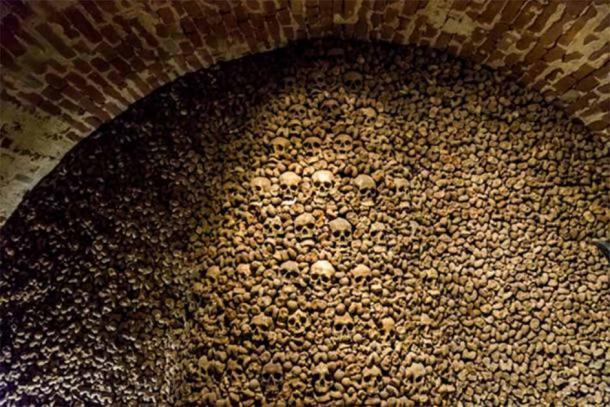In human history, there are some tales so bizarre they surpass the wildest fiction. One such story, rooted in the grim realities of 16th century France, reveals a desperate and macabre solution to famine: the grinding of human bones into 'flour' for bread-making.
Desperation in Siege: The Origins of Bone Bread
The background to this strange episode is set during the tumultuous Wars of Religion in France. In 1590, the city of Paris, controlled by the Catholic League, found itself under siege by the French Royal Army led by Henry of Navarre, later Henry IV of France. The siege aimed to starve the city into submission, a tactic that led to desperate measures.
In these dire times, Pierre de L’Estoile, a clerk-in-chief of the French Parliament, recorded a chilling decision made by Parisians. As food supplies dwindled, an assembly proposed a horrifying solution: to grind the bones from the Cemetery of the Innocents' charnel house into flour and bake bread from it. Driven by extreme hunger, the plan was executed, but with tragic outcomes. L’Estoile notes that those who ate this 'bone bread' met their death, not from starvation, but from the very solution they hoped would save them.

Skulls and bones from charnel house. (Martin / Adobe)
The Mystery of Death by Bone Bread
Why did those who ate the 'bone bread' die? This question has puzzled historians and scientists alike. Some speculate that toxic substances like arsenic, or psychological trauma from consuming human remains, contributed to the deaths. However, a more likely explanation lies in the nutritional inadequacy and inorganic nature of human bones.
Human bones are rich in minerals like calcium but lack essential nutrients and calories. Consuming bone as a primary food source could lead to severe digestive issues, including intestinal blockages, which in the context of an already weakened populace, proved fatal.
Interestingly, by the early 19th century, the understanding of bone's mineral richness shifted its use. Following the Napoleonic Wars, the bones of fallen soldiers and horses from the Battle of Waterloo were collected, ground up, and used as fertilizer, not food, in recognition of their rich mineral content.
While the tragic tale of Paris's bone bread remains a dark chapter, a peculiar legacy continues in England. In Gloucestershire, a type of bread known as 'Bone Bread' emerged, named not for its ingredients but for the boneyard scavengers along the River Severn in the 1860s. This bread thankfully contains no human remains, marking a stark contrast to the desperate measures of 16th century Parisians.
Top image: Human skull and bread. Source: Samitanun / Adobe Stock.
"bread" - Google News
November 24, 2023 at 08:54PM
https://ift.tt/VqRI17g
Human Bones Were Ground into Flour to Make Bread in 16th Century France - Ancient Origins
"bread" - Google News
https://ift.tt/e8J6FZx
https://ift.tt/czwbAe4
Bagikan Berita Ini














0 Response to "Human Bones Were Ground into Flour to Make Bread in 16th Century France - Ancient Origins"
Post a Comment